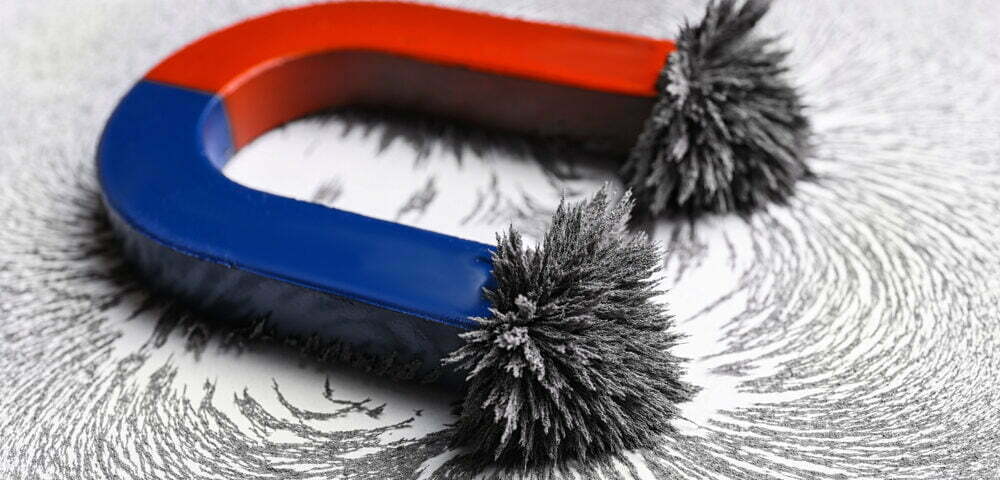Understanding Magnetism Within Utah Stainless Steel

On Metal Ductility, Hardness and Malleability
November 29, 2022
How Steel and Metal Extraction Processes Work
December 4, 2022There are several factors you may be thinking about when ordering a particular steel product for an upcoming need, and one of these in many settings is magnetism. Those who are purchasing a product like stainless steel, for instance, will often need to know whether or not it’s magnetic for a variety of reasons – and the answer in this case is that it depends.
At Wasatch Steel, we’re happy to offer the very best steel products and services in Utah, with materials ranging from steel sheet and steel plate to many others. Why does magnetism matter with stainless steel, what qualities must be present for stainless steel to be magnetic in nature, and which types of stainless steel are typically magnetic versus non-magnetic? Here’s a full rundown.
How Does Steel Magnetism Work?
For those who aren’t familiar with the way magnetism works, it’s important to understand that steel has magnetic qualities due to its molecular structure. Steel is made up of iron atoms, which means that it can be a strong conductor of electricity and heat – but also magnetism. The strength of this magnetism will vary depending on the type of steel alloy being used.
In some cases, this magnetic strength will be low enough that it won’t have any effect on our daily lives. In other cases, however, steel’s magnetism can play a major role in determining whether or not we’re able to use a particular type of stainless steel for a given purpose.
Why Magnetism Qualities Matter for Stainless Steel
There are situations where magnetism will be highly desirable within a stainless steel material. For instance, bulk metal materials that are stored together will need to be sorted based on magnetism later, and this is where a magnetic stainless steel product will be highly useful.
On the flip side, however, there are other cases where magnetism will not be desirable at all in stainless steel. During welding and fabrication operations, for example, magnetic stainless steel can interfere with the process and cause a variety of different problems.
Luckily, it’s simple to figure out whether a given stainless steel does or does not contain magnetic qualities. Let’s dive into how to do this, plus some of the types that tend to fall into each category.
Basic Stainless Steel Magnetism Qualifiers
Generally speaking, a stainless steel must have two properties to have magnetic qualities:
- Must contain iron: Firstly, the stainless steel must contain iron for it to be magnetic. It can also include other metals like cobalt, nickel and molybdenum, but it needs at least some iron to achieve a magnetism quality.
- Crystal structure must be martensitic or ferritic: When we talk about the crystal structure of stainless steel, this refers to the arrangement of the metal’s components. The two relevant structures in terms of magnetism are martensitic and ferritic; if a stainless steel qualifies with either of these features, it will certainly be magnetic.
One key element that does not impact magnetism in stainless steel, despite some myths to the contrary, is corrosion resistance. Corrosion resistance is completely tied to amounts of chromium or molybdenum in the steel, not its magnetic qualities.
Our next several sections will go over the common types of stainless steel out there, plus whether they’re typically magnetic or not magnetic.
Ferritic Stainless Steels
As we noted just above, ferritic stainless steels are typically magnetic due to the crystal structure. This type of stainless steel contains some chromium and also has other metals like molybdenum and aluminum, but it does not contain nickel.
You can easily identify ferritic stainless steel products because their metallurgical structures tend to be quite hard. Additionally, these materials will be somewhat magnetic, though not as strong as some other types of stainless steel.
Austenitic Stainless Steels
On the flip side, the majority of austenitic stainless steels will not have any magnetic qualities. This is largely due to their higher quantities of austenite, which is a non-magnetic type of crystalline structure.
Austenitic stainless steels contain large amounts of chromium and nickel, so they’re quite resistant to corrosion and rusting. However, due to their lack of magnetism, austenite stainless steels are not typically used for industrial applications that require sorting based on magnetic properties.
Now, there are some cases where using thermal treatment or work hardening can create some level of magnetism in austenitic stainless steels. In other words, it’s possible to make them magnetic – but it’s not their natural state.
Duplex Stainless Steels
A modern stainless steel alloy is duplex stainless steel, which is a mix of austenitic and ferritic crystals. There are usually enough ferritic crystals in here for duplex steel to be magnetic to some degree, though the exact quantity will depend on the particular piece of material.
Generally speaking, duplex stainless steels have a range of interesting capabilities that make them beneficial in certain industrial applications. This includes being highly resistant to corrosion, plus having magnetic qualities on top of that.
Martensitic Steels
In most cases, martensitic stainless steels are inherently magnetic due to their crystalline structure. These materials have no austenite, and instead are made up of chromium, molybdenum and carbon – plus some iron for magnetism.
In most cases, martensitic stainless steel is known for its hardness and strength. It’s also quite affordable due to the simple makeup of the material.
In conclusion, when it comes to stainless steel and its magnetism, the answer can be different depending on the type of steel. Ferritic, martensitic and duplex stainless steels are generally magnetic due to their crystalline structures, while austenite stainless steels will usually not contain any magnetism.
For more on this, or to learn about any of our steel products or services for Utah clients, speak to our team at Wasatch Steel today.



